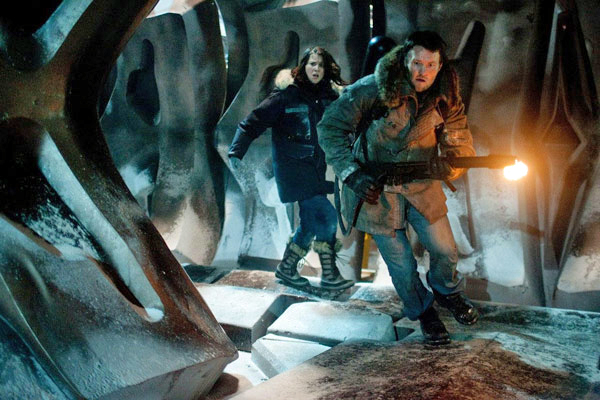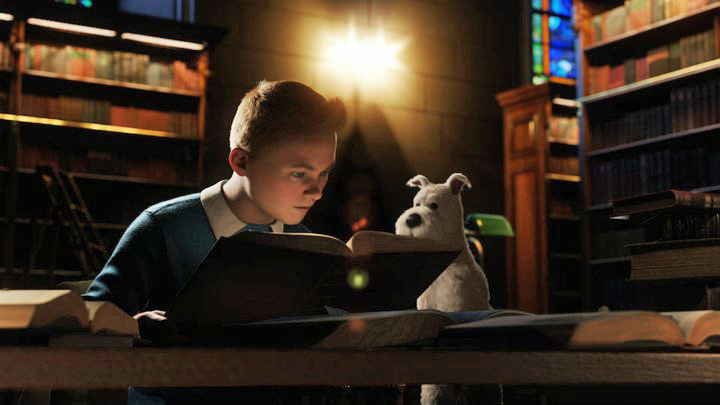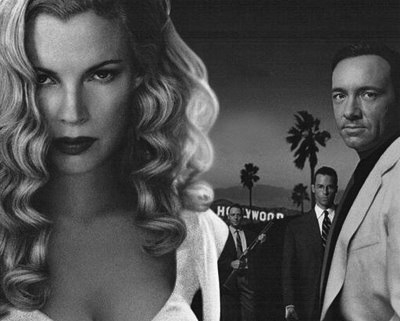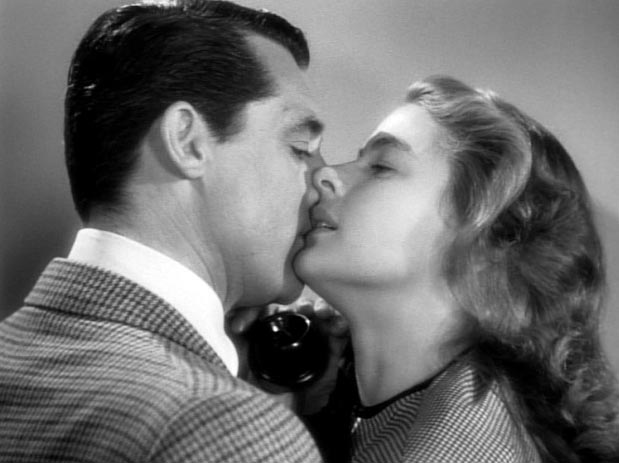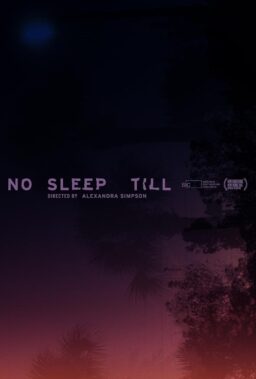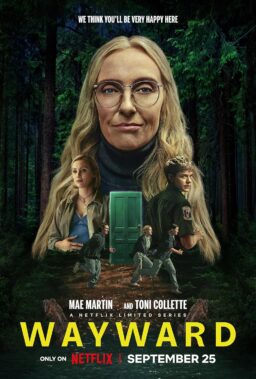Q. I’ve been watching the new restored DVD edition of “Casablanca,” and thought I heard Peter Lorre tell Humphrey Bogart that the famous letters of transit were signed by “General DeGaulle.” Surely the signature of the leader of the Free French would be useless in Nazi-controlled Morocco. What gives? (Greg Nelson, Chicago)
A. By happy chance I have just finished exploring “Casablanca” during my annual 10-hour stop-action film analysis at the Conference on World Affairs at the Univ. of Colorado. We played Lorre’s speech again and again. It sounded like “DeGaulle” to me, but others said he was actually saying “General Weygand.” Somebody suggested we look at the DVD’s subtitles. The English subtitles are quite clear: “DeGaulle.” Somebody asked what the French subtitles said. They were quite clear, too: “Weygand.”
Q. In “Erin Brockovich,” Julia Roberts is filmed in a continuous shot taking a ticket off her windshield, stepping into her car, and driving off into an intersection where she gets hit by a BMW at a high speed. I doubt director Steven Soderbergh would put Julia Roberts in such peril. How did he do it? (David Bischkem Milwaukee WI)
A. Universal spokesman Brad Mendelson replies: “Director Steven Soderbergh and cinematographer Ed Lachman worked with the visual effects supervisor, Tom Smith of Cinesite Hollywood, to create the car accident scene. It is composed of three different elements. The first is a shot of Julia Roberts getting into the car and pulling away. The second is a shot of a stunt driver hitting a radio-controlled car with a mannequin in the driver’s seat. The third is a “clean pass,” in which the motion controlled move was repeated without the car to give the compositors material to cut, paste and blend. The negative was then converted to digital format and the first two elements were grafted onto a single seamless shot.”
Q. In discussing the controversy about “Eyes Wide Shut,” you frequently point out the digital “Austin Powers” cutouts. In addition to this concession, did Stanley Kubrick do any other editing, such as taking OUT any shots? The reason I ask is because when I saw the film here in Los Angeles on opening day, there was a very brief shot of Cruise and Kidman which, in the video, is missing. It came just after the two-shot sequence of them kissing in front of the mirror and it consisted of an extreme close-up of the actors in an embrace. This was followed by a loud POP in the soundtrack (which seemed to mark the end of the reel), a jumpy cut, and then the fade in to the elevator opening at Dr. Hartford’s office the next day. Has anyone else reported seeing this shot? (Matthew Yium, Los Angeles CA)
A. Pamela Godfrey of Warner Brothers says she checked with the technicians who mastered the DVD, and they told her: “We checked picture continuity for the feature and confirm that the two-shot of Cruise and Kidman kissing in front of the mirror ends with a slow fade to black. The next shot is the elevator door opening at Cruise’s office. There is no missing shot in the video master. This is the original cut of this scene; it has not been altered in any way from the original cut which was finalized and approved. Note that the elevator sequence is the first cut to the head of reel 1B which may account for the pop if seen theatrically. The pop does not appear in the video master.”
Q. It really angers me that Curly of the Three Stooges is often shown in those “We love the movies” film-clip-with-music segments shown at the Academy Awards, yet the Stooges were never even considered for a lifetime achievement Oscar. Those insecure and pretentious Hollywood snots should remember what they actually
enjoyed on film rather than accept whatever the self-named elitists tell them to like. (Greg Brown, Chicago)
A. A posthumous honorary Oscar for the Three Stooges would unleash a standing ovation the likes of which has never been witnessed in Academy history. But it will never happen.
Q. In his speech accepting the Oscar for best documentary for “One Day In September,” its producer, Arthur Cohn, made a big deal out of the fact that the Academy was willing to honor it even though it hadn’t yet had a theatrical release. Now I hear grumblings that that’s why it won. Your analysis? (Susan Lake, Urbana)
A. It works like this. The documentary and foreign film by-laws require that you have to have seen all five nominated films in order to qualify to vote. Therefore, if you can get your unreleased film nominated, you hold “Academy screenings,” and make a concerted effort to recruit friendly audiences. By definition, the only voters who have seen all five films are the ones who have seen yours. Wim Wenders, director of the supposed front-runner, “The Buena Vista Social Club,” is reportedly plenty honked off over losing. Nanette Burstein and Brett Morgen, who made “On the Ropes,” another contender, feel it would be inappropriate for them to comment. But Joe Berlinger, director of the great docs “Brother's Keeper” and “Paradise Lost,” is fed up and isn’t going to take it any more. He tells me, “The entire Oscar nominating history for docs turns my stomach. The long list of snubbed films (as well as the long list of undeserved winners) confirms for me that this award in this category has little meaning other than the skill to manipulate the system. (Of course there are always exceptions–deserving films that actually get recognized.) Until there is a documentary branch of the Academy that treats docs like any other film in any other category, nothing will change, despite the recent band-aid attempt to improve the situation.”
Q. The Answer Man fielded a question about a shooting in “Ghost Dog,” where Forest Whitaker fires a gun up a drain and kills someone in the bathroom above. This sounds exactly like one of the killings in Suzuki’s “Branded to Kill” (1967). Jarmusch could well have seen it before making “Ghost Dog.” Not knocking him, you understand–I adore him–just speculating. (Michael Schlesinger, Sony Classics, Culver City, CA)
A. You guessed right. Says Reid Rosefelt, the unit publicist on the film: “I believe the scene is an homage to the cult Japanese action film ‘Branded to Kill,’ where the hitman hero performs a hit in a similar fashion. While I never questioned Jim Jarmusch about this scene, Jim has said on many occasions that ‘Branded to Kill’ was an inspiration for ‘Ghost Dog‘.”
Q. It seems that whenever only one breast of a female is shown it is the left one. Is there some class in movie director school where this is taught? I don’t get it. Do you have any explanation? (Bill Brescia, Bloomington, IN)
A. Of course. If the woman is facing the camera, the left breast is invariably closer to the “strong axis,” or harmonious balancing point, just to the right of center, as suggested by discoveries about visual composition by the painters of the Renaissance.

